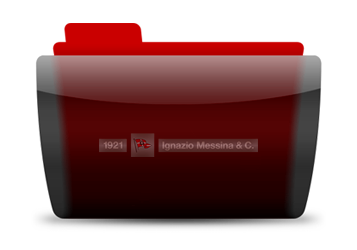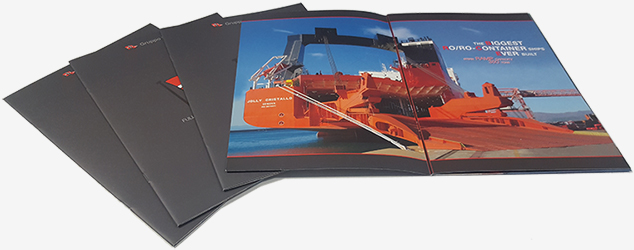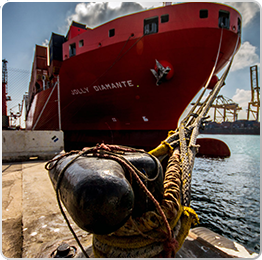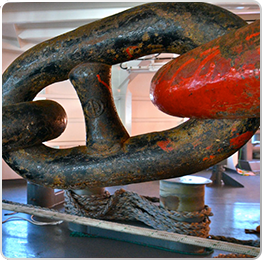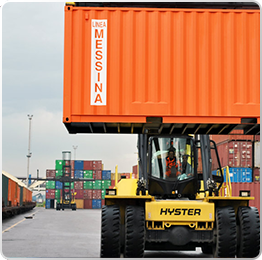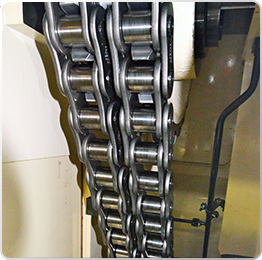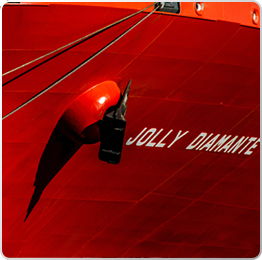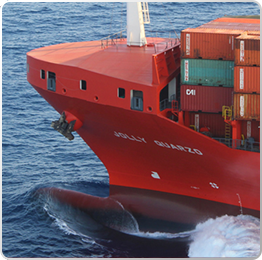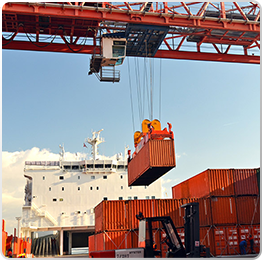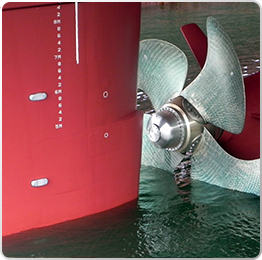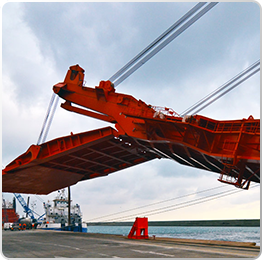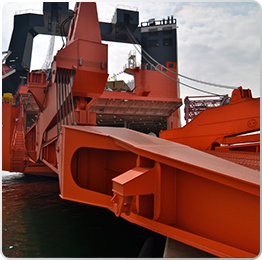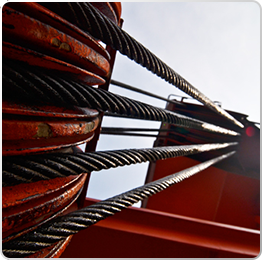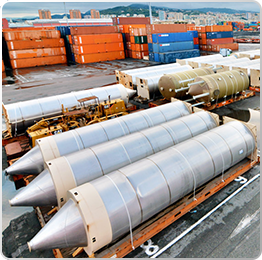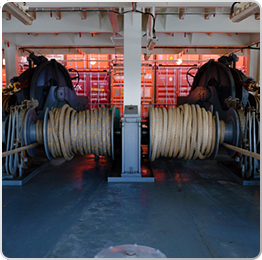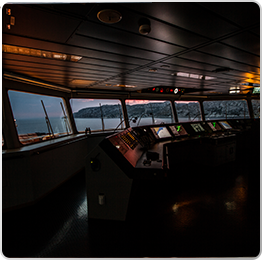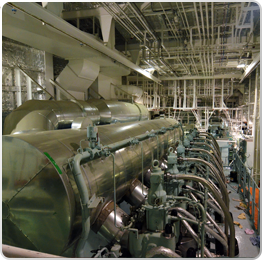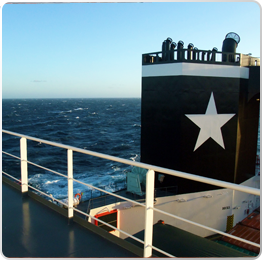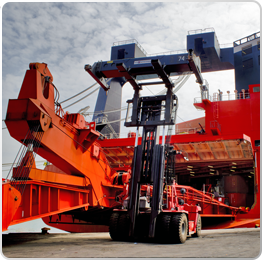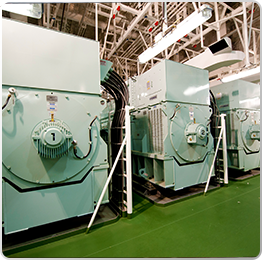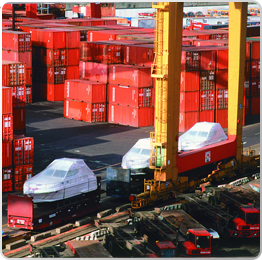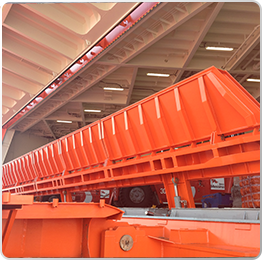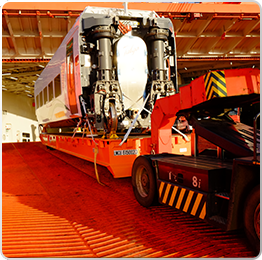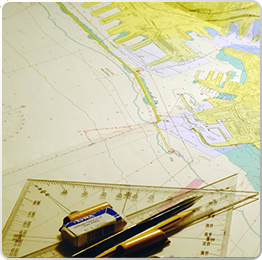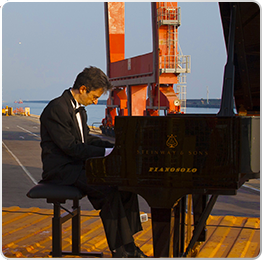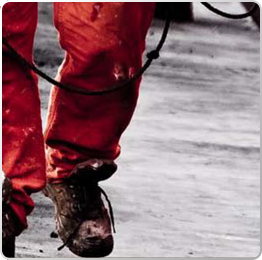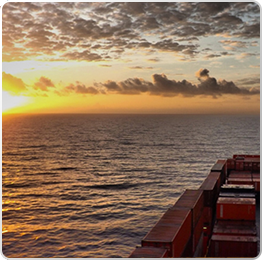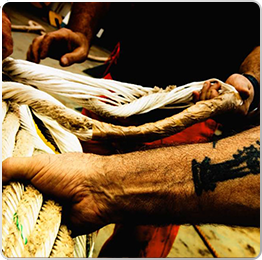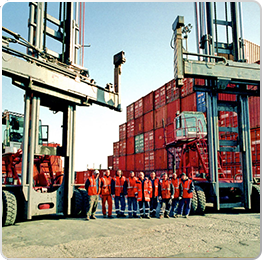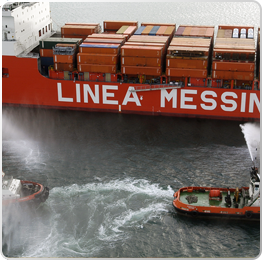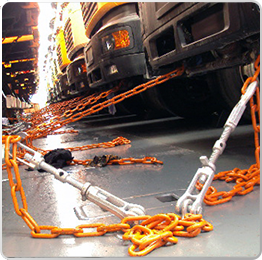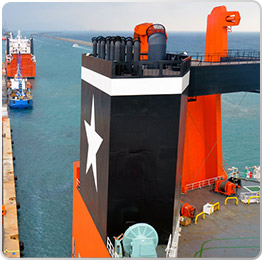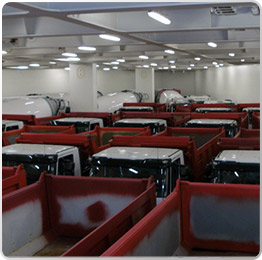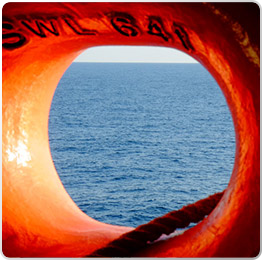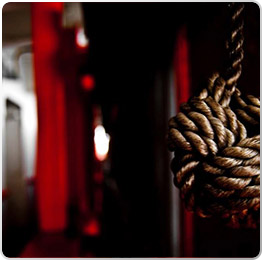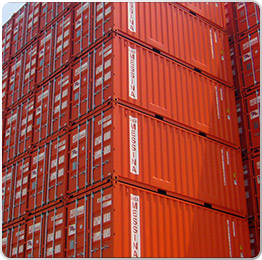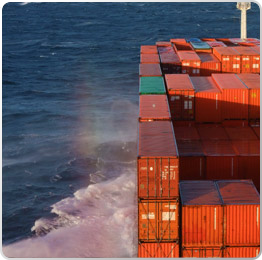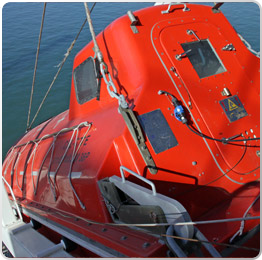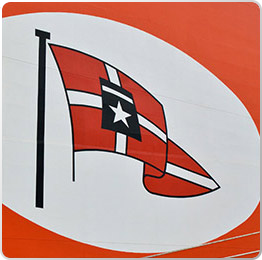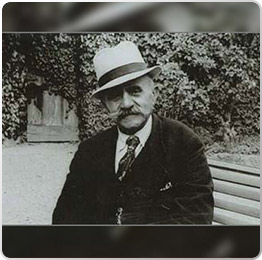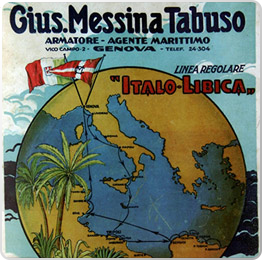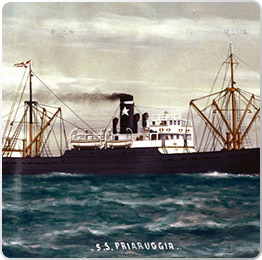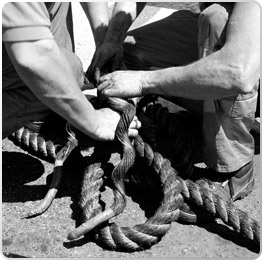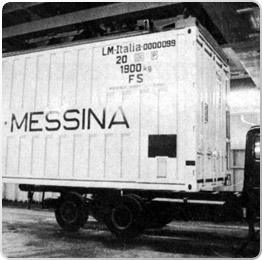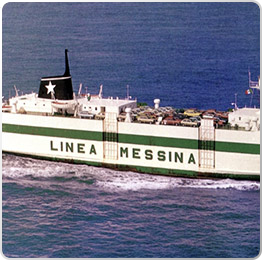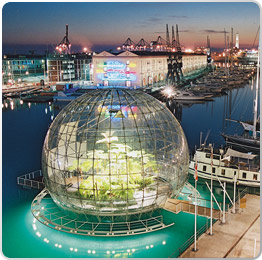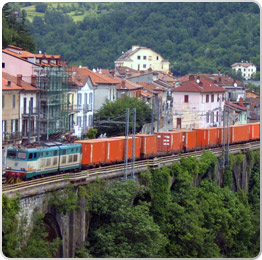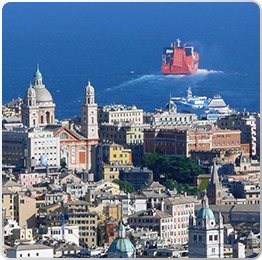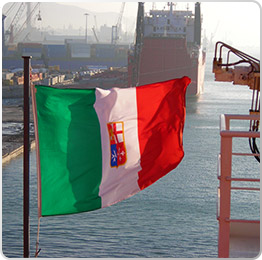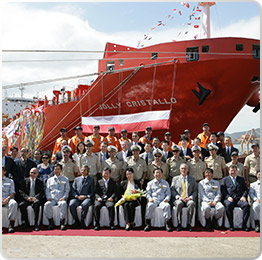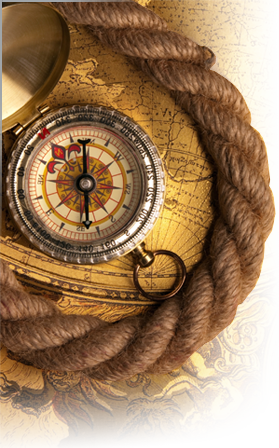
About us
Full steam ahead, between tradition and innovation
An organized and highly specialized network of services and a unique experience in managing any kind of shipments
During the second half of the XIX Century, the Messina Family began its ship owning activity in the little harbor of Riposto (Catania), Sicily. Initially the company only traded wine products, but it gradually expanded until it become one of the main Italian shipping companies in the World.
Ignazio Messina & C. provides regular line services that connect the Mediterranean to Africa, the Middle East, and the Indian subcontinent, reaching more than 50 ports and supplying over 40 different countries.
Thanks to the development of an efficient ground logistic system, the Company serves more than 100 inland destinations in Africa, the Middle East and India, as well as in Europe.
In addition to the headquarter in Genoa, Italy, the Company has:
- commercial offices in Italy: Modena and Naples;
- representation commercial offices in Europe: London, Barcelona, and Valencia;
- controlled agencies in Africa: South Africa (Durban, Cape Town, Johannesburg), Senegal (Dakar), Kenya (Mombasa, Nairobi), Tunisia (Tunis), Uganda (Kampala), and Mozambique (Maputo).
The Company has over 1,000 people worldwide.
History
One history across four generations
A family enterprise that, from the early 20th Century to today, has known how to expand and deal with the challenges that the economic market has presented it with, not least the strong global competitiveness, facing them with dedication and strong, remarkable courage.
Over ninety years of history, this is our identity.
Over ninety years of history, this is our identity.
1921: After several ship owning experiences and having moved with his whole family to Genoa, Giuseppe Messina gradually retired entrusting the company management, still named "Giuseppe Messina Tabuso", to his eldest son, Ignazio, who immediately established regular line services towards Northern Africa, using only ships flying the Italian flag.
1929: Although it had been already outlined in 1921, the company "Ignazio Messina S.a.S.” was officially born. The efficient line services to North Africa obtained the approval of the Italian shipping industry: The Company gain the designation as “Guidone postale” to Libya. The wine commerce had been definitively neglected and the Company started to trade more profitable goods such as sugar, wheat, petroleum and concrete. This was a moment of great enlargement for both trades and routes.
During the 1930’s the Company’s flag waved at Ponte Eritrea, achieving a steady moor and some docks where stocking goods.
1931: The fleet increased in four new units. Vessels started to depart from Genoa twice or three times a week, following the route "Genoa - Naples - Messina - Catania - Malta - Tripoli - Homs - Sliten - Misurata - Sirte - Bengasi".
1935: Regular line services were expanded towards the Red Sea, Saudi Arabia and East Africa. Furthermore, a new free regular service to Eritrea was established: at the beginning the departures were monthly, but soon they were set fortnightly. The number of vessels enlarged and they were transformed on the basis of the peculiar needs of cargo typologies: goods, raw materials, workmen, troops and passengers.
The second half of the 1930's had been characterized by development policies, which allowed the Company to grant itself the transport of rich goods as cotton, hides, coffee, bananas and colonial spices. Ignazio Messina set up a shipping agencies network, hiring local people. He promoted the proliferation of loading and unloading companies, arranging cargos warehouses, and created some companies to manage inland transports, especially on railway.
1940: The Company owned a 17-ship fleet and managed 70 employees and 500 crew members. In Tripoli, Ignazio Messina & C. had also a storage for ships' refueling; furthermore, the Messina Company acquired "I Cantieri Del Mediterraneo" in Pietra Ligure, taking more than 300 additional employees.
As Italy entered World War II, the business of the Company was connected to the defense of the fleet, and such it remained until the spring of 1945.
1946-1950: After World War II, despite the loss of all of his vessels, Ignazio Messina focused on restoring the traditional shipping routes established in the 1930s, particularly the services to Libya and Tunisia, and aiming for East Africa, South Africa and Arabia, long for serving the whole of the African continent.
1955: The 1950s were one of the darkest times for the Company. Ignazio Messina had to recur to private funding to cater commitments.
1958: Ignazio Messina was forced to leave the shipyard industry, focusing his business interests in the shipping company management only.
1960: Messina Company newly acquired a dozens of available ships and began to sail towards new ports in Maghreb, the Red Sea, and Arabia. Furthermore, the collaboration with the Italian ports of Livorno and Naples were restored. Gianfranco, Giorgio, and Paolo, Ignazio's sons, gradually joined the Company: led by their father, they started contributing to further development of the business.
1968: Ignazio transformed his traditional ship owner business and specialized in the ro/ro and container services. The new ro/ro vessel "Jollyemme" started commercial voyages from Genoa to Libya: the first containership service from Italy to foreign ports was established. During the closure of the Suez Canal, Ignazio Messina's vessels had been the only ships flying the Italian flag to guarantee the regular schedule towards Eastern Africa and the Red Sea.
1974: The Company Ignazio Messina & C. became a S.p.A.
1977: The Messina Terminal was moved from Genoa to La Spezia.
1982: Sadly, Ignazio Messina passed away. The leadership of the Company was then strong into his son’s hands.
1980-1995: The fourth generation (Andrea Gais, Massimo, Ignazio, Stefano, and Emanuele Messina) gradually joined the Company, carrying on the family-run management and business.
1996: The Company returned to Genoa as terminal operator, granting Molo Ronco, Calata Derna, and the background area. It has been the first port terminal in Europe that obtained both the RINA classification for safety and environment, and the Security Code ISPS approval.
2001: During the 80th anniversary of the foundation of the Company foundation, the Messina family donated a huge glass sphere designed by Renzo Piano, which was intended to become a big ferns greenhouse, to the city of Genoa. The structure was placed at Porto Antico, next to the famous Aquarium of Genoa, exactly where the Messina's vessels where berthed in the 1960s.
2009: Ignazio Messina & C. signed an agreement with the Korean shipyard Daewoo to build four new ro/ro units, which were designed to be the biggest ro/ro vessels in the world, for a total investment of approximately 300 million dollars.
2010: Together with Terminal San Giorgio, Messina Company won the tender notice for the former Multipurpose Terminal areas, obtaining the grant for Molo Canepa, part of Calata Bengasi, and part of a background area. The works to fill the water space between Molo Ronco and Molo Canepa were started and are currently underway.
Some works are currently underway, in order to fill the body of water between Molo Ronco and Molo Canepa up.
2011: In December, the first of the new Jolly ro/ro ships was delivered and was named Jolly Diamante. Jolly Perla (May 2012), Jolly Cristallo (October 2012), and eventually Jolly Quarzo (February 2013) followed over the next two years.
2012: Ignazio Messina & C. ordered at the Korean shipyard STX four additional ro/ro units, investing a further 300 million dollars to complete the renovation of the fleet.
2013: Gruppo Messina S.p.A. management holding was established. This rearrangement of the Company was made in order to achieve better efficiency and meet the requests and transformations of the market. All the shipping activities are entrusted to the “new-born” Ignazio Messina & C. S.p.A.
2014: Jolly Titanio, the first vessel of the second ship series, was delivered; this unit has been followed by three twin ships: Jolly Cobalto, Jolly Vanadio, and Jolly Palladio, which was the last to be delivered in May 2015.
2016. The Messina Terminal becomes IMT – Intermodal Marine Terminal, offering its services to third parties as well.
2020. Marinvest, the Italian holding of the MSC Group, enters the company's capital with a 49% stake
2022-2023. A phase of transformation and market repositioning begins through the purchase of container ships, increasing significantly the capacity offered on the market.
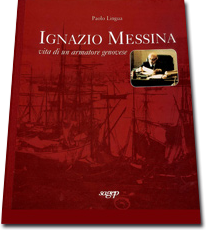
Certified Documents
Last Updated Documents
